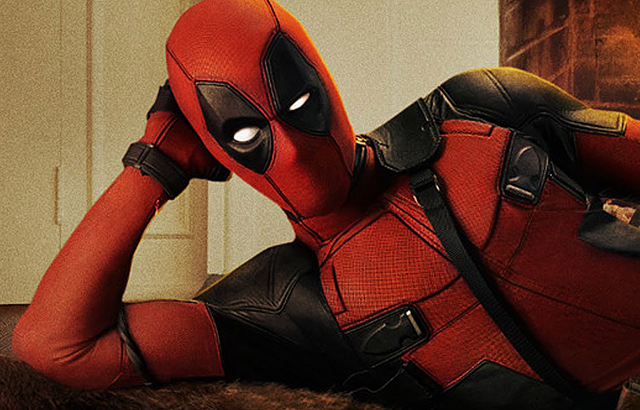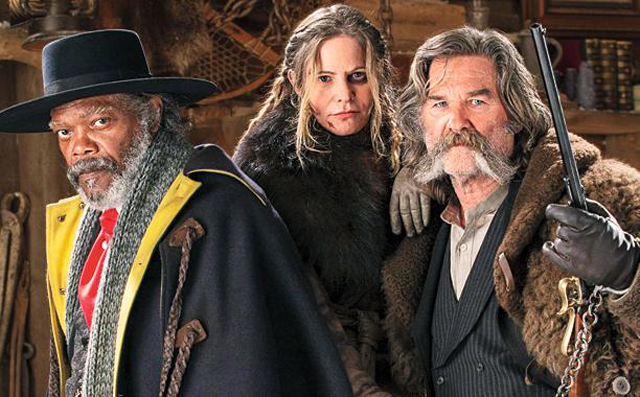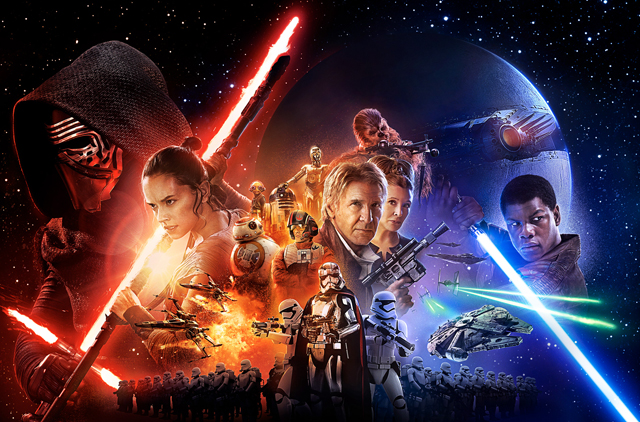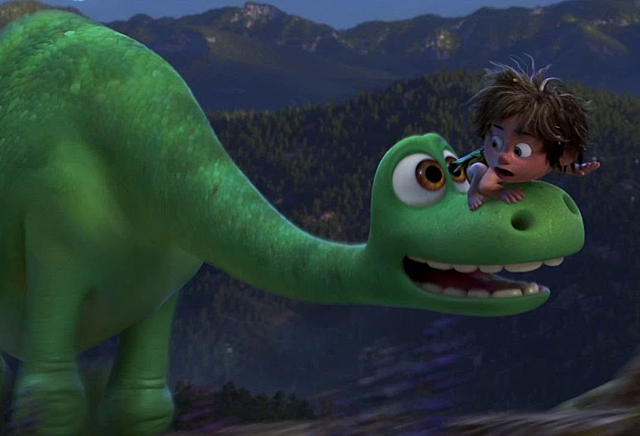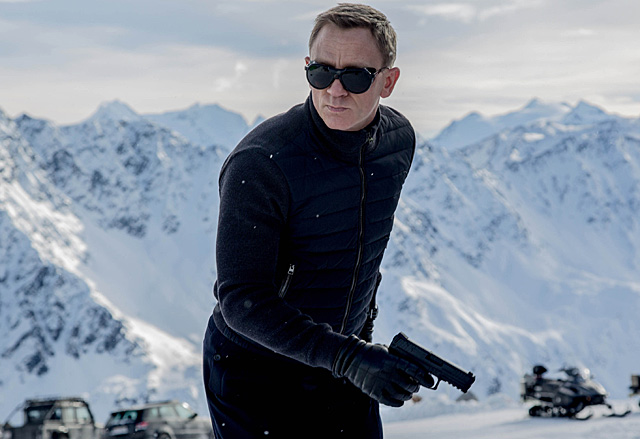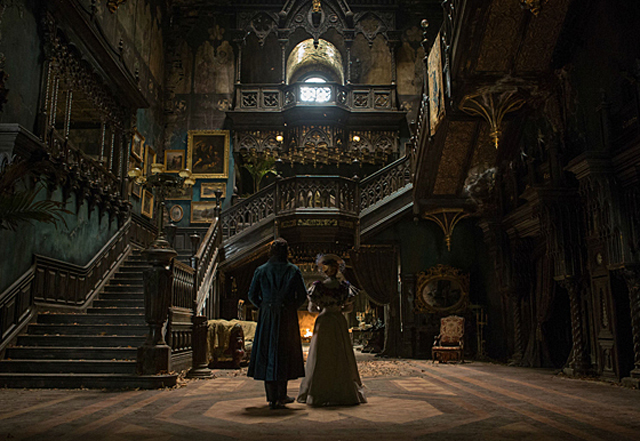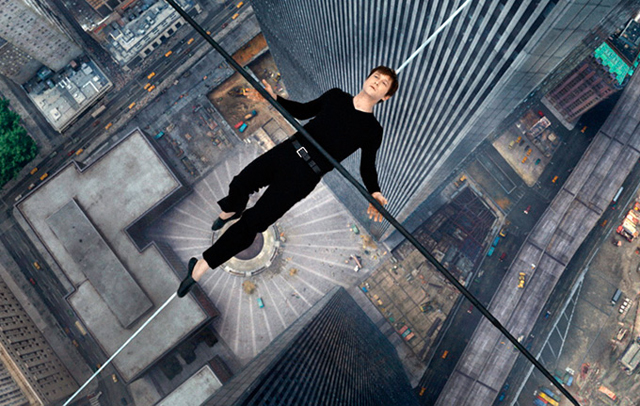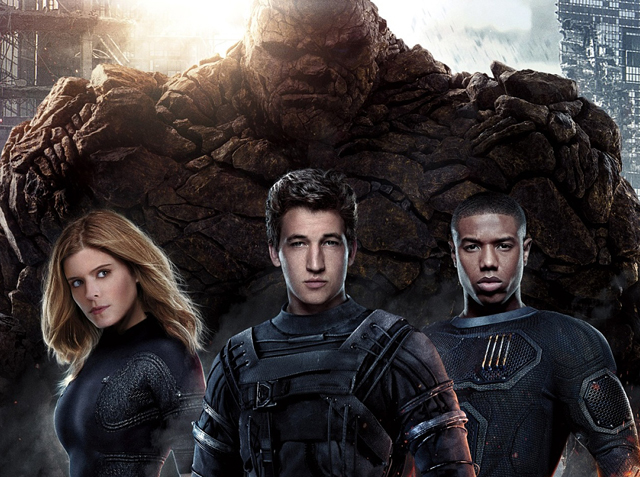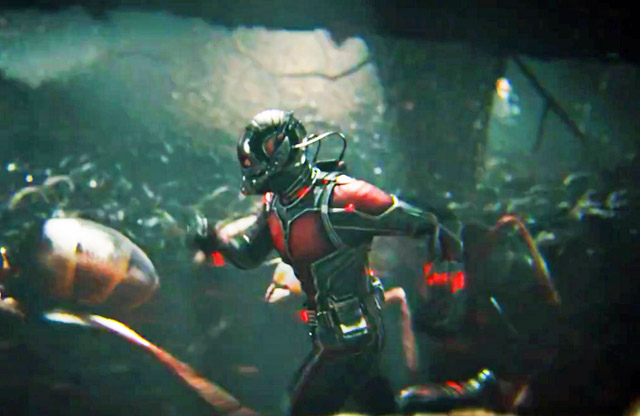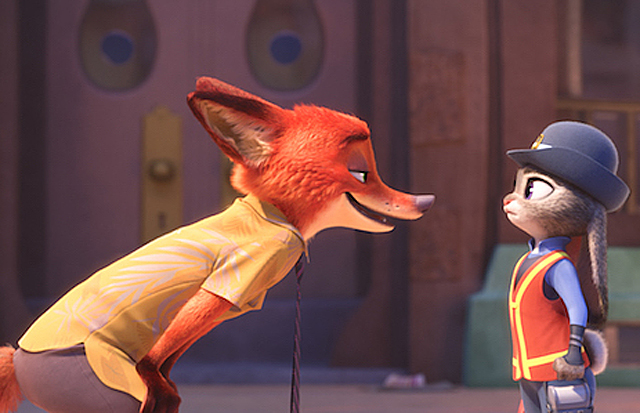
The animated movie market is an often perilous road for filmmakers. On the one hand, it can generate amazing success if one of your films hits with an audience, but on the other hand, you must always be aware of changing tastes in the market. The unfortunate thing for animation producers is the long gestation period it takes to make an animated film; it can sometimes take 4 or more years to go from development to final product. And this is even more complicated when you are continually releasing a movie every single year. For a lot of animation studios, it’s a tough act to pull off; being able to retain high returns with every release. The unfortunate result is that we find more and more animation studios that are less willing to take risks with their movies; choosing to play it safe and reliable rather than pushing the envelope. That’s why so many animated films today tend to be formulaic and not groundbreaking, because that enables them to have broader appeal to the average viewer. Occasionally, you do get a studio like Pixar that does achieve long-standing success by continually challenging themselves with every movie; much like how they managed to do for much of the 2000’s. But even their success pushed them to the limit and now they are starting to be bit by the formula bug (movies like Brave, Cars 2, and The Good Dinosaur all falling victim to it). But, while we do see some giants of animation fall, we’ll also witness the rise of another to fill that gap in quality entertainment, and surprisingly enough it’s tried and true Disney Animation that seems to be the ones delivering right now.
Of course, Disney has had it’s share of pitfalls throughout it’s long history. In fact, they have usually emerged as the trendsetters of both the right ways and the wrong ways to build an animated body of work. Coming out of a dark, aimless period in the couple decades after Walt Disney’s death, the Disney Animation Studios enjoyed a massively successful Renaissance period that started with The Little Mermaid (1989) and went all the way through to The Lion King (1994). At this point Disney believed that they worked out the formula on how to make hit movies year after year, but that proved not to be the case. Pocahontas (1995), The Hunchback of Notre Dame (1996) and Hercules (1997) all failed to match The Lion King‘s success and Disney once again found themselves loosing their edge, and they couldn’t reverse course quickly due to the lengthy developments of their movies. In this time, CGI animation became the rage, thanks to Pixar’s Toy Story (1995), and with the release of Chicken Little (2005), Disney was forced to follow suit in this new era, abandoning the hand drawn medium that their studio was built on. But, as Pixar, Dreamworks, and all the other animation studios have gone back in forth terms of quality as of late, Disney has continued to refine their art with every film and are once again finding themselves at the top of the pack by doing what they’ve always striven to do and that’s to make quality entertainment for all audiences. This manifested in a big way with Frozen (2013), Disney’s biggest animated hit ever, but the best thing about this new era of Disney animation is that they are once again taking chances with their films again, both in their content as well as in their art. And the boldest expression of this so far may be seen in their new film, Zootopia.
Zootopia takes place in an alternate reality where human beings do not exist and that it has been all other species of animals that have evolved over time and built up civilizations. In the titular city of Zootopia, animals live and work together in harmony with each other, functioning not unlike most other modern societies. We meet Judy Hopps (voiced by Ginnifer Goodwin) a spunky rabbit from the country trying to make a life in the big city as the first bunny police officer ever. Unfortunately for her, she receives little confidence in her abilities from her superior, Chief Bogo (voiced by Idris Elba), who places her in parking meter management. But, opportunity rises when an abduction case falls into her lap, and with the support of higher up officials in City Hall who want their inclusion program in the police force to work, she is given a chance to solve it by Chief Bogo, but only with the ultimatum that she completes it in 48 hours. Judy diligently pursues any leads she can find and her only hope of solving the case rests with the trustworthiness of a con artist fox named Nick Wilde (voiced by Jason Bateman). Forced together by their situation, Judy and Nick uncover a conspiracy in the city of Zootopia that is turning the normally civilized citizens into savage, feral beasts, and along the way they must learn to trust one another, despite the fact that they are natural enemies to begin with. And so, they travel all across the four districts of Zootopia, encountering rodent mafias, a DMV run by sloths, and all other big city obstacles that fall in their way of uncovering the truth, including their own innate prejudices.
Zootopia, to say the least, is a very enjoyable animated film that’ll appeal to audiences of all ages. There are visual gags galore and a touching story about friendship at it’s core. But, what I actually took away the most about this movie was not the humor or the lush visuals; it was actually something that usually becomes a flaw in most other animated movies and that’s the socially aware message. It’s not suggested clearly in any of the advertisements of this movie, but there is actually a very poignant statement made in this film about the nature of bigotry in modern society. Animated movies have tackled issues of racism, sexism, and class-ism before, but never quite as profound as it is in Zootopia, and it’s actually quite refreshing. In the movie, both of our main characters have suffered discrimination in some way, sometimes in very cruel acts. Judy deals with it by overcoming her limitations and proving her worth, while Nick embodies all the negative stereotypes that are associated with his kind and makes them work to his advantage. It is only by working together that Judy and Nick manage to tackle discrimination head on, even facing the consequences that their own underlying prejudices that threaten their fragile alliance and eventual friendship. It’s a profound message that I was surprised to find in such a supposedly silly cartoon. Despite the best intentions of a society of animals to create a peaceful coexistence together, underlying bigotry still sets people apart and keeps good ones from ever being fully accepted in the society that they deserve to be a part of. Sure, the cast is filled with animals, but this is an issue that is all too real in our human world, and I’m happy to see this movie tackle it head on.
Sadly, the strength of that message also leads me to my one complaint about the movie, and that’s it’s cop out finale. I thought that the message of the film was so strong, being that bigotry is the worst enemy of a civilized society, that the movie could stand on it alone, having the characters’ biggest challenge be something larger than any of them could ever defeat. In other words, this movie could have been a masterpiece if it had broken from the Animated movie formula and have society at large be the film’s antagonistic force instead of standard villain. But, unfortunately, the movie does have a villain, and a fairly weak one at that. I won’t spoil the eleventh hour reveal, but it kind of cheats the message of the movie by explaining away a societal woe through an over-arching conspiracy. Someone in the movie turns prey against predators in a ploy to create an idealized society that favors one class over the other and in turn helps to elevate their own stature. Given that this movie took over four years to make, I doubt that the filmmakers could have foreseen the rise of Donald Trump, but the revelation in this movie does have the benefit of mirroring current events. Still, it felt like a cheap excuse to close up plot threads to give the characters a happy ending, whereas I think the movie would have benefited from a more bittersweet finale. Yes, the main characters come together and solve their differences, but it would have made better sense that the larger issue of the injustice because of bigotry is left unresolved, because it would have made the lesson more profound. Still, it’s welcoming that the message is here at all and delivered in such a well executed way. In that sense, I can forgive the film for not sticking the landing in the end. I just wish they hadn’t gone through that step, thereby minimizing their intentions.
Apart from the film’s message, there is also a lot to love about the visual presentation of Zootopia. This is a beautifully realized world that is filled with so many clever details. Just like The Lego Movie (2014) I will bet you that this will be an animated film that audiences will watch again and again just to catch all the peripheral little gags and details in every frame. Movies that depict alternate worlds like Zootopia have been done before (Cars). In fact, Disney has used the anthropomorphic animal society aesthetic twice before in their history (1973’s Robin Hood and 2005’s Chicken Little). But few if any of those predecessors have had this kind of attention to detail devoted to them. You can tell that the filmmakers devoted a great amount of effort to make this world both authentic and visually stimulating. It’s so stimulating in fact that you often feel like the filmmakers are holding back as they share it with us. The movie feels like it merely scratches the surface of this lush, fully realized world and I wouldn’t be surprised if a sequel allows us to explore more of it in the future, because I’m sure that there is plenty of Zootopia yet to be seen. And that is a mark of a good movie, leaving us wanting more. For what we do see, it does serve the story well and much of the entertainment value is in picking up the visual gags whenever they appear, like characters using iPhones with a carrot logo on it instead of an Apple, or the little animal versions of contemporary brands; like Mousey’s instead of Macy’s. Another visual detail that I’m glad that the filmmakers took into account is the fact that all animals are to scale in this movie. It’s not like other Disney films where we see a four foot tall mouse named Mickey walking around. No, here Judy Hopps is a normal sized rabbit who sometimes has to deal with animals many, many times her size, including elephants. It’s details like that which really helps Zootopia stand apart from it’s other like-minded predecessors.
One other bright spot is the well-rounded cast. Judy and Nick make a great pair of protagonists and their voice actors bring them to life perfectly. It seems only natural for a slick talking actor like Jason Bateman to play a sly fox con artist, and the role plays perfectly to his strengths. The more revelatory performance though comes from Ginnifer Goodwin as Judy Hopps. She commands the role wonderfully, making Judy one of the more compelling heroes seen in any recent Disney film. Originally, the focus of the film was going to be on Nick Wilde, playing upon the idea of what happens when a fox steps into a society run by rabbits; which could have been an interesting tale in itself, but the filmmakers wisely put the focus more on Judy, because it helps the underlying message of the movie better. It flips the expected result by having the prey persecute the predators for being different, and that’s more profoundly explained through the eyes of a happy-go-lucky little rabbit who doesn’t recognize her own bigotry at first, because she’s only viewed the world before as the underdog. Goodwin plays both of those character aspects perfectly and it’s a performance that can illicit laughs from the audience in one moment and tears in the next. The leads are also given great support from an impressive roster of voice actors including Idris Elba, J.K. Simmons, Nate Torrence, Jenny Slate, Bonnie Hunt, Octavia Spencer, and even Tommy Chung (hilariously playing a naturalist hippie yak). Pop star Shakira even pops up as a singer named Gazelle, who is exactly what you’d expect her to be. I also have to give special props to veteran voice actor Maurice LaMarche for his hilarious Vito Corleone impression manifested in the body and voice of a shrew, making it one of the movie’s funniest gags. For a movie to become a hit, it needs characters that you’re willing to follow, and Zootopia benefits from a very strong cast.
Overall, I would say that Disney is continuing their hot streak with Zootopia, which may very well be their most assured and resonant movie in recent memory. I’ve been a Disney fan for most of my life and because of that, my quality standards are usually a bit more stringent than other people. You’ve got to remember, I grew up during the Renaissance period, when it looked like Disney could do no wrong. That period is still a high water mark for me, and despite the overwhelming success that Disney is enjoying right now, I still have some reservations about their so-called recent “masterpieces”. I’m one of the few people out there who didn’t fall in love with Frozen for example; I thought it was just okay and nothing special. At the same time, I feel like the ones that take a chance with their message and visual aesthetic are the Disney movies that I respond to more as an adult. Wreck-it Ralph (2012) is in my opinion the most underrated Disney film in recent memory, and I felt that Big Hero 6 (2014) had a lot of great elements too, although like Zootopia it suffers from a lackluster villain. But, taking into account all the elements that I judge a Disney film by, Zootopia gets more right than wrong, and it actually may be my favorite movie of theirs since they’ve switched over to computer animation. Zootopia is a culmination of all the lessons that Disney has learned about how to make a good CGI animated movie and it represents them reaching the peak of their abilities at this moment. At the same time, it also just stands on it’s own as a solid story with a compelling lesson at it’s center. The fact that it addresses the issue of systemic bigotry in modern society makes it almost essential viewing, especially for younger audiences. If this movie can inspire the youngest among us to not prejudge somebody because they are different, or place blame on them for the same reason, then it will have done something that few other movies have done and that’s to change the world. And this is something that Zootopia should absolutely be praised for in the end.
Rating: 8.5/10
